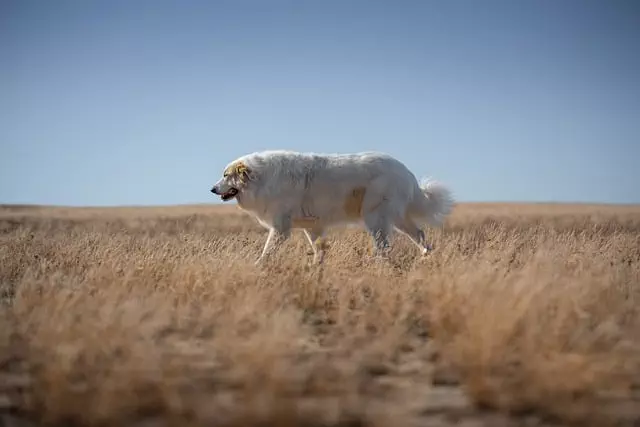A high-quality heated dog house is essential for ensuring your pet's comfort and warmth during cold weather. These structures are equipped with effective insulation, such as foam or thick wooden panels, to maintain a consistent internal temperature by slowing heat transfer. Rigid foam insulation options like extruded polystyrene (XPS) and polyisocyanurate (ISO), along with spray polyurethane foam (SPF), are recommended for their moisture resistance, high R-values, and ability to create an airtight seal. Proper ventilation is crucial to prevent condensation and maintain air quality inside the dog house. Design elements like a well-sealed structure, a tight-fitting door, reflective floor barriers, and strategic placement to capture sunlight while shielding from wind are important for maximizing heat retention and comfort. The integration of these design principles with high thermal mass materials and passive solar features ensures a regulated microclimate inside the dog house, making it an energy-efficient and safe space for dogs. Advanced heated dog houses offer adjustable thermal settings and enhanced features like resilient floors and attached runs to provide a comfortable and protected environment for dogs in cold climates. These modern solutions are a significant improvement over traditional models, offering a warm and self-regulating space that supports a dog's health and well-being throughout the winter season.
When winter’s chill sets in, ensuring your canine companion stays warm becomes paramount. A heated dog house is a cornerstone of their comfort, but did you know that insulation plays a critical role in retaining heat? This article delves into the science and practicality of maintaining optimal warmth for dogs through effective insulation. From understanding how heat is retained to selecting the most suitable materials and optimizing designs, we’ll guide you through every step to create a cozy, heated dog house tailored for your furry friend’s comfort. Discover how advanced technologies are paving the way for even greater comfort in canine living spaces.
Understanding Retained Heat in Canine Comfort: The Role of Insulation in Heated Dog Houses

Canines, much like their human companions, require comfortable living conditions that cater to their thermal needs, especially in extreme climates. In regions where temperatures dip significantly during winter months, a heated dog house becomes an essential refuge for our furry friends. The effectiveness of a heated dog house hinges not only on the efficiency of the heating system but also on the quality of its insulation. Insulation plays a pivotal role in maintaining the warmth generated within the dog house by slowing down the transfer of heat to the colder external environment.
High-quality insulation materials, such as foam or thick wooden panels, are critical in retaining heat and ensuring that the internal temperature remains at a comfortable level for the dog. The goal is to create an insulated barrier that minimizes heat loss while allowing any residual heat to dissipate gradually, thus preventing condensation and maintaining a dry and cozy environment. This not only enhances the canine’s comfort but also reduces the frequency and duration of heating system operation, which in turn saves energy and prolongs the lifespan of the heated dog house. When selecting a heated dog house, it is advisable to consider the insulation properties carefully to ensure that your pet stays warm and content, regardless of the weather outside.
Material Matters: Selecting the Best Insulation for Your Dog's Custom Retreat

When crafting a custom retreat for your canine companion, selecting the appropriate insulation is paramount to ensure your dog remains comfortable and warm during colder seasons. Material matters significantly in this context, as it determines not only the effectiveness of heat retention but also the longevity and safety of the heated dog house. Among the various options available, rigid foam insulation stands out for its high R-value, which measures its resistance to heat flow. This type of insulation is particularly effective in preventing heat loss, making it a top choice for regions with harsh winters. When opting for rigid foam, consider materials like extruded polystyrene (XPS) or polyisocyanurate (ISO), both of which offer robust insulating properties and are resistant to moisture, which can compromise the integrity of the insulation if not properly managed.
Another material to consider for your heated dog house is spray polyurethane foam (SPF). This versatile insulation expands to fill every nook and cranny, providing an air-sealed barrier that is both an insulator and a vapor retarder. SPF’s ability to adhere to various substrates makes it an excellent choice for retrofitting existing structures or constructing new ones. Its high R-value per inch ensures that even the smallest heated dog house can retain significant amounts of heat, keeping your furry friend snug and cozy throughout the coldest nights. When installing any type of insulation, ensure proper ventilation to prevent condensation buildup, which could lead to mold growth and compromise the health of your pet. By carefully selecting the right insulation material for your dog’s custom retreat, you can create a safe and comfortable environment that offers protection against the elements all year round.
Designing for Efficiency: How to Optimize a Heated Dog House for Maximum Heat Retention

When designing a heated dog house for optimal heat retention, it’s crucial to consider insulation materials that are effective at maintaining warmth while being durable and safe for your canine companion. The structure should be well-sealed to prevent cold air from infiltrating, and the door should have a tightly fitting flap or locking mechanism to minimize drafts. Utilizing materials such as high-density foam insulation within the walls and roof can significantly enhance heat retention capabilities. Additionally, incorporating a reflective barrier beneath the floor can reflect radiant heat back into the house, which is particularly beneficial if your dog house is situated on cold ground.
The orientation and placement of the dog house are also key factors. Positioning it to receive sunlight throughout the day can maximize interior warmth during colder periods. However, it should be shielded from prevailing winds and harsh weather conditions. The roof design plays a significant role as well; a sloped or A-frame style can facilitate the shedding of snow and rain, preventing moisture from seeping in and reducing the overall cooling effect. Ventilation is still necessary to prevent condensation and ensure proper airflow, but it should be designed to maximize heat retention while allowing for the exchange of stale air with fresh air. Employing a combination of these design strategies can create an environment where a heated dog house maintains its warmth, providing a cozy retreat for your dog even in the coldest conditions.
The Science of Heat Retention: Thermal Mass and Its Impact on Canine Living Spaces

In the realm of canine living spaces, the science of heat retention is pivotal in ensuring the comfort and well-being of dogs, particularly in environments with fluctuating temperatures. The concept of thermal mass plays a significant role in maintaining warmth within a heated dog house. Thermal mass refers to the ability of a material to absorb, store, and release heat. Incorporating materials with high thermal mass, such as concrete or bricks, into the construction of a dog house can significantly enhance its capacity to retain heat. This is crucial during colder periods when a dog needs extra insulation to stay warm. The design of the dog house should also consider the orientation of the structure in relation to the sun’s path, maximizing solar gain during the day while providing adequate shading to prevent overheating during warmer days.
The effectiveness of a heated dog house is not solely determined by the insulation used but also by its structural design and the materials chosen. A well-designed heated dog house will have a proper balance between insulation and thermal mass, ensuring that the heat generated by the heating system remains within the space for as long as necessary. This balance is essential in cold climates where dogs are particularly vulnerable to the elements. Additionally, the inclusion of strategically placed vents or passive solar design elements can further optimize the microclimate inside the dog house, maintaining a comfortable temperature range for the occupant. By carefully selecting and integrating these design principles, pet owners can provide their dogs with a safe and cozy retreat that leverages the science of heat retention.
DIY Heated Dog House Insulation: A Step-by-Step Guide for Pet Owners

Building a heated dog house can be a rewarding project for pet owners who want to ensure their furry friends remain comfortable in cold weather. To create an effective insulated dog house that retains heat, consider using materials like styrofoam or foam board for the walls and floor, as these provide excellent thermal resistance. Begin by constructing a sturdy frame, ensuring it’s slightly larger than your dog’s bed size for comfortable movement. Next, attach the styrofoam panels to the frame, cutting out a door that is well-fitted with an insulated flap. For additional warmth, line the interior with towels or blankets, which can be replaced regularly to maintain their insulating properties.
When it comes to the roof, opt for a design with a steeper pitch to facilitate snow and rain runoff, which can significantly affect heat retention. A hinged roof provides access and allows you to check on your pet or add extra bedding as needed. To enhance warmth, consider adding a low-wattage heating pad along the floor’s underside, ensuring it’s protected by a layer of safe material to prevent direct contact with your dog. Always test the heated dog house before your pet uses it, making sure the temperature is comfortable and the insulation effectively retains heat without posing any risks. Regular maintenance and checks will ensure your dog stays cozy and safe throughout the colder months.
Advanced Technologies in Heated Dog Houses: Innovations in Materials and Design for Optimal Comfort

When the mercury dips and frigid winds howl, providing a warm retreat for our canine companions becomes paramount. Heated dog houses leverage advanced technologies to ensure that pets remain cozy and comfortable even in the harshest winter conditions. These modern heated dog houses are not just about warmth; they incorporate innovative materials and thoughtful designs that mimic a pet’s natural den instincts while offering superior thermal retention. High-quality insulation, often including foam or reflective materials, traps heat effectively, with some models featuring adjustable heat settings to cater to different breeds and sizes of dogs. The design of these dog houses is aerodynamic to minimize wind chill and may include a sturdy, weather-resistant outer shell that shields from the elements. Additionally, they often come with features like a durable floor to protect against cold, damp ground, and some even have a run or enclosed area for extra space. The goal is to create an environment where a dog can regulate its body temperature comfortably, ensuring peak health and happiness during cold snaps. By integrating the latest in materials science and design innovation, heated dog houses provide a safe haven that’s a cut above traditional dog houses, making them an essential consideration for pet owners who prioritize their pets’ well-being.
